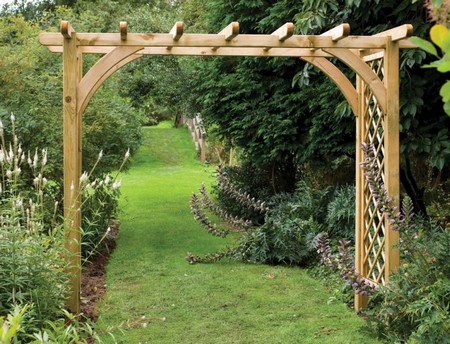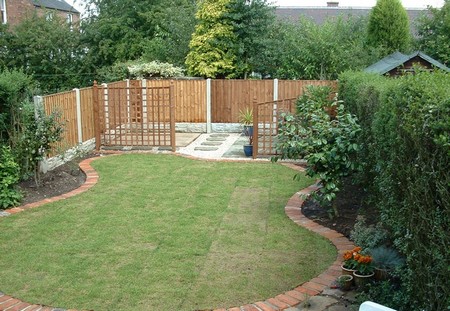Best Way to Decorate Your Garden with Arches and Pergolas
One of the oldest and most popular forms of garden structure is the arch, which has evolved into a larger and more dramatic incarnation known as the pergola. Arches and pergolas originated in Egypt and were later introduced into Italy for supporting vines and straddling paths.
Today, arches and pergolas are standard decorative features of gardens all over the world, being ideal structures for bringing height and permanency to gardens, whether near patios, astride paths or in the centre of a garden. Few sights in the garden are more attractive than an arch or pergola straddling a wide path and decked in flowering climbers or dramatic foliage.
As these structures provide such form and permanence in the garden, it might be assumed that they are enormously costly and time-consuming to construct. Of course, this is the case with the more ambitious types available – and naturally the grander the scale the more materials are required – yet there are arches and pergolas which can be easily assembled for little expense that will nevertheless make an instant and lasting impact on your garden.
Arches
Apart from straddling paths and separating one part of a garden from another, arches can be positioned against a fence or hedge and a seat positioned between the supporting posts.
Ready-made arches are available to buy from most garden centres, and all you have to do is assemble them. Of course, it is also possible to make your own, and one formed of rustic poles and trellis panels looks attractive, especially in a cottage-garden setting.
Constructing an arch: Use concrete to secure four 10cm (4m) thick and 2.4m (8ft) long rustic poles in the ground; position these posts about 60cm (2ft) apart on either side of a path. Each pole needs to be set 45cm into the ground. Ensure that they are upright, with each having the same length of timber above the ground. Secure cross-timbers to the top, using galvanized nails. Use small nails to secure three pieces of trellis – top and two sides -to the framework.
Pergolas for all gardens
Some pergolas have a clinical nature, others reveal a rustic charm, and this is influenced by the type of material used in their construction. Formal pergolas are ideal for most gardens, but where a cottage-garden ambience is desired, informal designs using rustic poles are more effective.
- Traditional-type pergolas: These are made of planed wood, with timber posts 10cm (4in) square and about 2.7m (9ft) high. This gives rigidity when the bottom 60cm (2ft) is concreted into the ground. Longitudinal timbers rest on the upright posts, themselves supporting cross beams.
- Rustic pergolas: These are formed of rustic poles, preferably larch or chestnut; uprights need to be 10cm (4m) thick and 2.7m (9ft) long, so that about 60cm (2ft) can be secured in the ground. Cross timbers need be only 7.5cm (3in) thick.
Categories
Advertisements
Recent Articles
 How to Understand Bed Sizes – A Small Guide
How to Understand Bed Sizes – A Small Guide How to Select Some Must Have Kitchen Accessories
How to Select Some Must Have Kitchen Accessories Best Way to Change a Car Tire
Best Way to Change a Car Tire Best Way to Write an Affirmation
Best Way to Write an Affirmation Best Way to Take Charge of Your Financial Life
Best Way to Take Charge of Your Financial Life Best Way to Survive a Party When You Don’t Know Anyone
Best Way to Survive a Party When You Don’t Know Anyone Best Way to Stop Self Sabotaging Yourself
Best Way to Stop Self Sabotaging Yourself Best Way to Start Journal Writing
Best Way to Start Journal Writing Best Way to Speak with a Powerful Voice
Best Way to Speak with a Powerful Voice Best Way to Simplify Your Life
Best Way to Simplify Your Life Best Way to Respond to a Put-Down
Best Way to Respond to a Put-Down Best Way to Reduce Acne Breakouts
Best Way to Reduce Acne Breakouts Best Way to Recover from Dining Disasters
Best Way to Recover from Dining Disasters Best Way to Quit Your Job Gracefully
Best Way to Quit Your Job Gracefully Best Way to Make Your Own Website
Best Way to Make Your Own Website



Leave a Reply